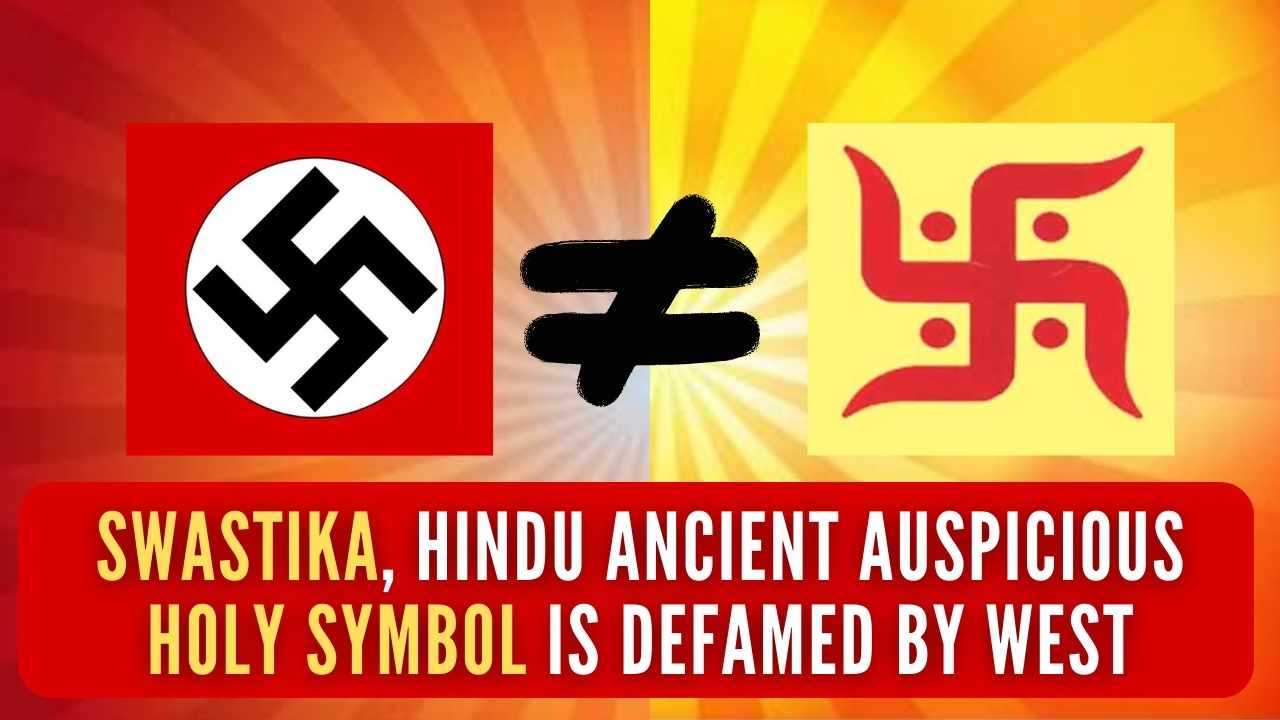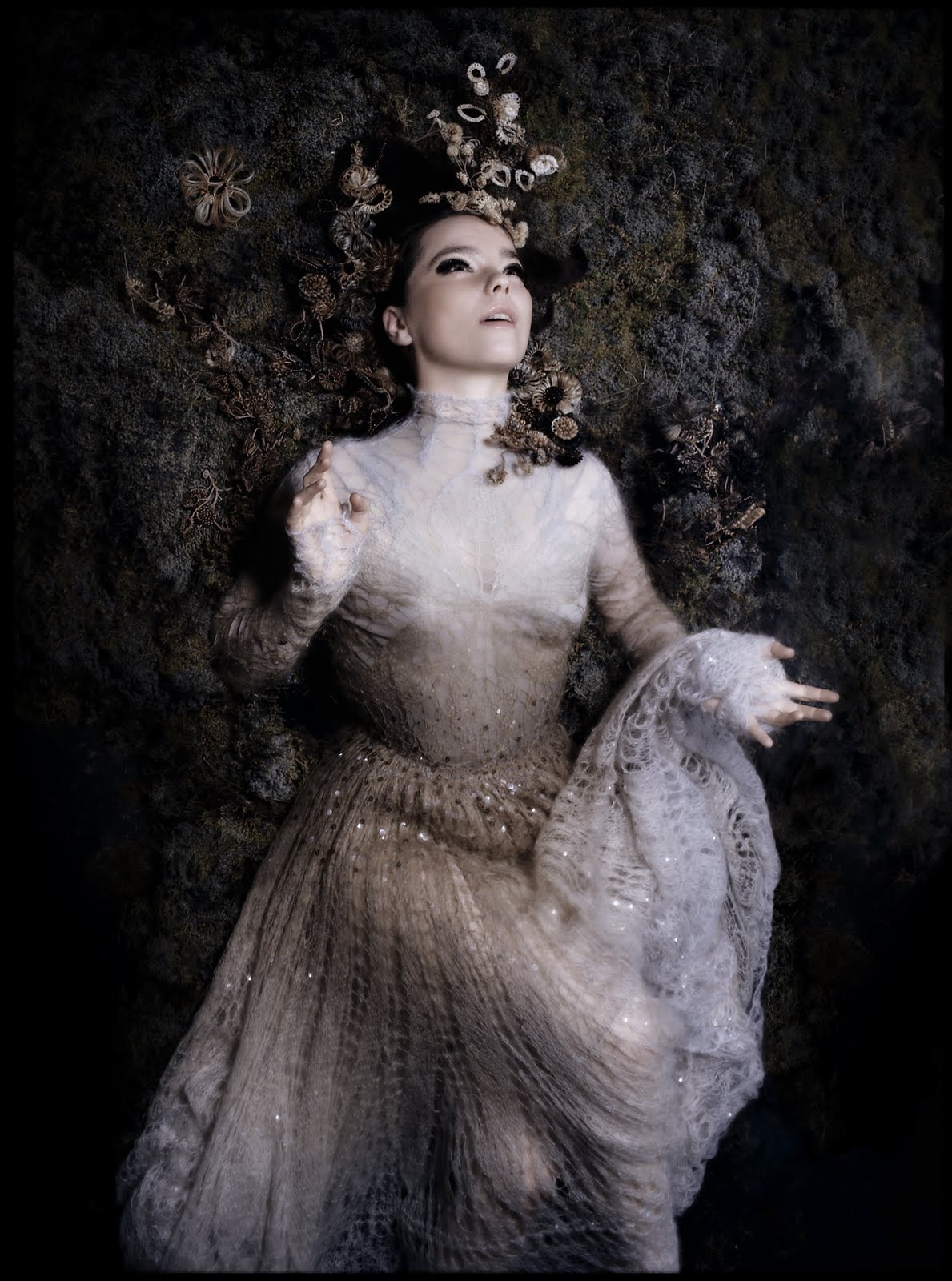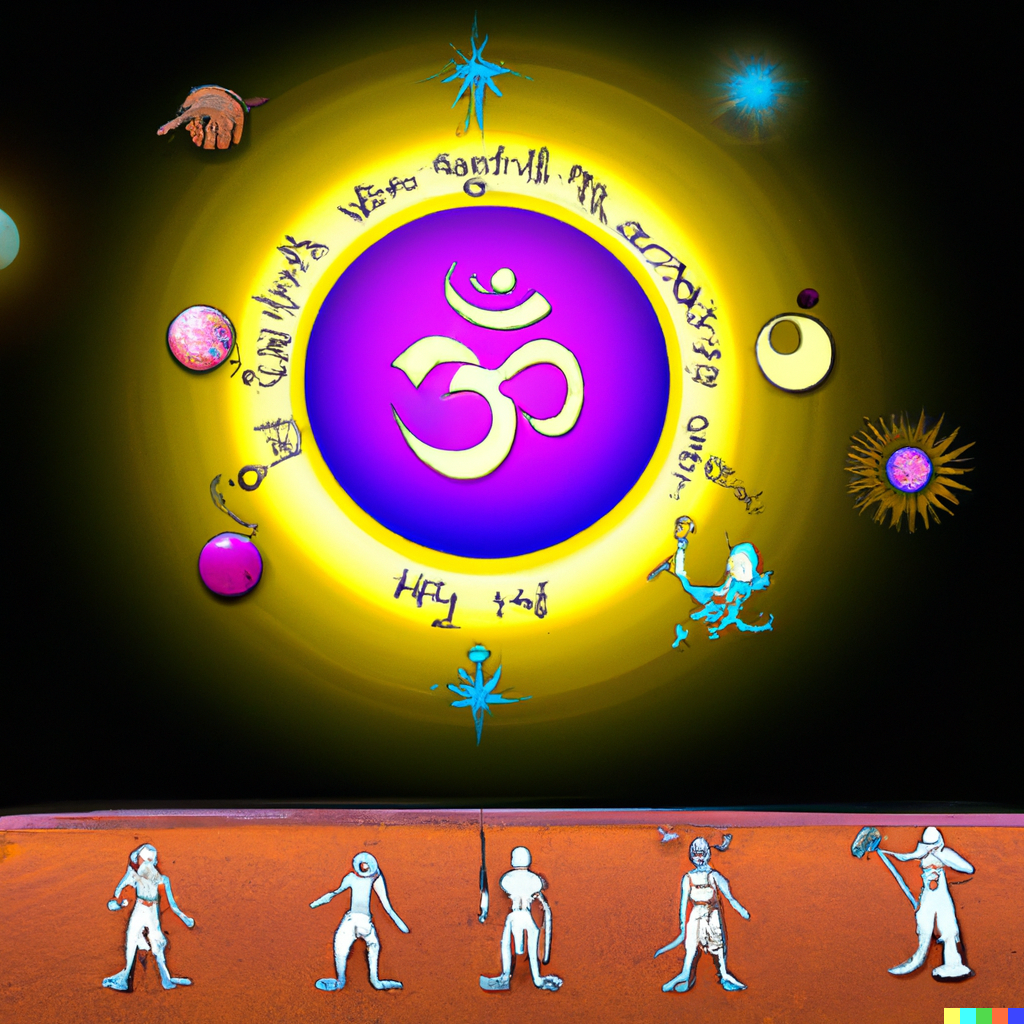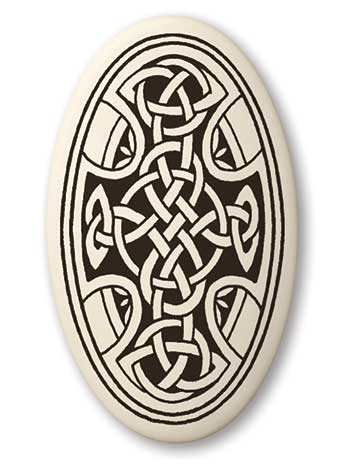Remember : please click open in new tab each typed letter with a different color
Swastika
The swastika (also known as the gammadion cross, cross cramponnée, or manji) is a symbol that generally takes the form of an equilateral cross, with its four legs bent at 90 degrees (as a Chinese character: 卐 or 卍). It is considered to be a very sacred and auspicious symbol in Hinduism, Buddhism and Jainism.
It appears as a decorative element in various cultures since at least the Neolithic, and is mostly known as a symbol in Indian religions, denoting "auspiciousness", adopted as such in pre-WWI-Europe and later, and most notably, by the Nazi Party and Nazi Germany. Because of its use in Nazism, in many Western countries the swastika is stigmatized, while it remains commonly used as a religious symbol in Hinduism and Buddhism.
The word swastika derives from the Sanskrit svastika "lucky or auspicious object". The older term gammadion cross derives mainly from its appearance, which is identical to four Greek gamma letters affixed to each other.
It's a very
ancient symbol. The swastika or the gamada cross is a mystical symbol
found in many cultures at different times, the Hopi Indians to the
Aztecs, the Celts to the Buddhists, the Greeks to the Hindus. Some
authors believe that the swastika has a special value to be found in
many cultures without contact with each other. The swastika used as a
symbol of Buddhism and meaning "good wind" was used by Adolf Hitler
because of his appearance as a gear, supposedly to symbolize their
intention to an industrial revolution in Germany. Another meaning
attributed to the Sanskrit swastika is "good luck", or "Su" - "Good" and
"Asti" - "being". Represents the dynamism and creative energy Cosmic.
The swastika is an extremely powerful symbol. The Nazis used it to murder millions of people, but for centuries it had positive meanings. What is the history of the swastika? Does it now represent good or evil?
The Oldest Known Symbol
The swastika is an ancient symbol that has been used for over 3,000 years. (That even predates the ancient Egyptian symbol, the Ankh!) Artifacts such as pottery and coins from ancient Troy show that the swastika was a commonly used symbol as far back as 1000 BCE. During the following thousand years, the image of the swastika was used by many cultures around the world, including in China, Japan, India, and southern Europe. By the Middle Ages, the swastika was a well known, if not commonly used, symbol but was called by many different names:
< ✿ > China - wan
< ✿ > England - fylfot
< ✿ > Germany - Hakenkreuz
< ✿ > Greece - tetraskelion and gammadion
< ✿ > India - swastika

Though it is not known for exactly how long, Native Americans also have long used the symbol of the swastika.
Brief History of the Swastika
The
swastika is not a symbol of nazi germany, it is a symbol of Thor’s
hammer “Mjölnir” and nothing is wrong with being proud of acknowledging Thor[✿1], many people wear a “classical” pendant with Thor’s hammer but most of them have no idea that the swastika is even connected to Thor[✿2] and would never DARE to carry a swastika pendant in honour of him and just to remind you…
The
swastika is a symbol of beauty not only for the european culture but
for many others! For example it is a hindu symbol of their god “Vishnu”.
In miniature India, Khidr trip over
the big fish, suggesting the image of the first avatar of Vishnu,
Matsya: The fish that save man in Manu myth (Satapatha Bramana, ...8 i..). Since early times in the form of water
and light the locals had cult him (Khidr) as the Protector of River
Sindhu (Indus-Pakistan). believe to be the incarnation (deity-saint and
avatar) of Vishnu-Krishna and is known by various names such as Khwaja
Khizr (God of Water), Baruna / Varuna / Varun Dev / Jhulelal (Baruna / Varuna / Varun Dev / Jhulelal is Khidr).

Hammer pendants and Eyrarland Statue.
Pendants in a distinctive shape representing the hammer of Thor (known in Norse sources as Mjöllnir) have frequently been unearthed in Viking Age
Scandinavian burials. The hammers were worn as a symbol of Norse pagan
faith and as a symbol of opposition to Christianization; a response to
crosses worn by Christians. Casting moulds
have been found for the production of both Thor's hammers and Christian
crucifixes, and at least one example of a combined crucifix and hammer
has been discovered. The Eyrarland Statue, a copper alloy figure found near Akureyri, Iceland dating from around the 11th century, may depict Thor seated and gripping his hammer.
"The Thor’s Hammer, Fyrfos, or the sun symbol also called swastika is an
ancient Indo-European symbol. It is a symbol of life-giving forces of
the sun, and the life-sustaining forces of Thor (Hermes in Greek Mythology and Mercury in Roman Mythology). It is the most sacred symbol of the Nordic-Germanic tradition.”
Mjölnir in Old Norse means "That which marks and pulverizes to dust".
Mjøl in modern Norwegian (nynorsk) literally means "flour" or "powder", so "Mjølner" (Norwegian spelling) can mean "Pulverizer".
Mjölnir is usually interpreted as meaning "That which smashes". The verb mölva "To smash" (cognate with English meal, mill); comparable derivations from the same root meaning "hammer" are Slavic molot and Latin malleus (whence English mallet).
An alternative suggestion compares the name to Russian молния (molniya) and the Welsh word mellt, both words are taken as meaning "lightning". This second theory would make Mjölnir the weapon of the storm god identified with lightning, as in the lightning-bolt or vajra. There have also been instances where the war god Skanda (Murugan) is described as holding a vajra. Skanda is also the name of a Bodhisattva in Mahayana Buddhism who wields a vajra.n other Indo-European mythologies.
Various figures in Tantric iconography are represented holding or wielding the vajra. Three of the most famous of these are Vajrasattva, Vajrapani, and Padmasambhava.
Vajrasattva (lit. vajra-being) holds the vajra, in his right hand, to
his heart. The figure of the Wrathful Vajrapani (lit. vajra in the hand)
brandishes the vajra, in his right hand, above his head. Padmasambhava
holds the vajra above his right knee in his right hand (vajra, Vajrapani, Skanda-Murugan, The Peacock Angel, The Return of the King of the World is Al-Khidr).
Supreme Gods
The three elder or "Supreme" gods of
Hinduism are Brahma (The Creator), Vishnu (The Protector and Preserver)
and Maheshwara also known as Shiva (The Destroyer of evil forces and the
Transformer). The Supreme gods of Greek mythology are Zeus (The Lord of
the skies) , Poseidon (The Lord of the Seas) and Hades (The Lord of the
Underworld). The youngest of the Greek brothers is Zeus. The Supreme
gods of Norse mythology is Odin. His brothers Vili and Ve helped him
kill Yemir but are not seen in further stories (from : Comparison of Greek and Hindu Gods and Important Characters).

The Magician's card, Hermes or Mercury appears wearing the same colors and even raises an arm to the sky and the other to earth. In front there are 4 objects between them a blade. Hermes is the son of the spiritual light with darkness and its primary colors red and white reflect the mixture of earthly passions with spiritual clarity.
The name Manoel means "God is with us", variation of the name Immanuel.
This proves the junction of evil and God to achieve a higher purpose.
Khidr in Astrology
Astrologically, the planet Mercury represents the principals of
communication, intelligence and elegance. Therefore Khidr refers
directly to Mercury in astrology. He is typical Mercurial character, like Kothar wa Hasis, Nabu, Hermes, Odin etc. Firstly, he is lord of wisdom, he has hikmah and also knows ilm al-ladunni (a kind of esoteric knowledge). According to the Quran. Khidr who is different in folk religions than the Quran, moves very fast, like other Mercurial types; Nabu, Hermes, Odin and even Zoroastrian yazata
Sraosha. This feature is originated from the rhythm of the planet
Mercury. Because Mercury is known with his swiftness. In mythology,
Mercury is the messenger of the gods, noted for his speed and swiftness.
It symbolizes the conjunction between the material and spiritual world.
Therefore Mercurial gods are psychopomp, like Hermes as Mercurial, Hermes was Mercurial type and he has capacity to explain (hermeneus) the secret (sacred) doctrines In ancient Greece.

The swastika here is of different origin. Eventhough it is historically correct, you hardly find any buddha's with swastikas within SL (Second Life). The Nazi swastika and the Buddhist Swastika, are precisely the opposite!.
Swastika is the form of beauty, as you see the beauty of the landscape that beautiful as paradise, the beauty of mind, beauty of heart, bright, shining from all corners of the wind.
" The Truth of the Meaning of the Swastika Symbol "
卐 Swastika is an explanation of reflections of light that shines or the travel light to penetrate an object (such as light that penetrates glass, shadows that are in the water, penetrating mind and heart, penetrating all around the space and time) that very very beauty of light (the beauty light of the mind, the beauty light of the heart, the beauty light of faith), bright and shining which emanated from all corners of the wind. 卍
The meaning point of swastika is the beauty of the positive energy that bounces light from our minds and our hearts, so that we can always give thanks for life, to be obedience, submission and piety human to the Creator (GOD / ALLAH), so every human can understand that mankind is useful for many people, and really realize, that life is indeed very meaningful, and not futility.
The symbol of this Swastika actually is the name ALLAH (God of people Islam / Muslims), deliberately, I use parables letter (alphabet), to express the difference in writing styles of letters (alphabet), such as different Chinese letters (alphabet) with Russian letters (alphabet). The swastika symbol is derived from Arabic letters (alphabet) which means ALLAH, indeed I deliberately wrote like the letter (alphabet) style India, with the intention of .... whatever their religion, one of my expectations ... ALLAH was their Lord, nothing else.

I created the pseudonym (nickname) Keanu Revees for Keanu Reeves in 1984.
John Constantine
The name "John": English form of John, which in turn comes from the Hebrew and means: God is merciful and has compassion. And 'Constantine': way to Constantine, which in turn comes from Latin and means "constant, firm and steadfas.
As a sorcerer, Constantine is armed with the knowledge of many magical spells, rituals, and curses, such as evocation, necromancy, illusions, invisibility, and can even use magic to time travel. He also has a wide range of protection magic such as sigils and magic circles that can protect him from both physical and supernatural attacks. But John's most signature ability is synchronicity wave travelling, which is an instinctual supernatural ability for Constantine to make his own luck.
This has led John to uncanny luck at games of chance, the ability to
avoid and escape harm, meet the right kind of ally to help prevent or
stop an apocalyptic event from happening, and reshape the battle he's
fighting to his own accord. Constantine is also highly resistant to many psychic attacks such as telepathy, possessions, and mind control. He can even use magic to block off omnipresence, seen where he once used sigils to hide himself from the First of the Fallen. By the New 52, other magical powers such as mild teleportation, counter spells, electrokineses, telekinesis, and immobilisation have been added. He can also use magic to reflect damages done to him unto his enemies.

I created pseudonym (nickname) Björk for Björk in 1984. Björk or Björg is a feminine given name of Old Norse origin in use in Scandinavian countries, including Sweden and Iceland meaning "help, Salvation." It is a popular middle name for girls born in Iceland. (Song of Björk and The Sugarcubes : Deus).
Deus
Deus (Latin pronunciation: [ˈdeːʊs]) is Latin for "god" or "deity". Latin deus and dīvus "divine", are descended from Proto-Indo-European *deiwos, from the same root as *Dyēus, the reconstructed chief god of the Proto-Indo-European pantheon. Compare Greek Zeus (Ζεύς zdeús; Aeolic Greek Δεύς deús) and Sanskrit देव deva.
In Classical Latin, deus (feminine dea) was a general noun referring to a deity, while in technical usage a divus or diva was a figure who had become divine, such as a divinized emperor. In Late Latin, Deus came to be used mostly of the Christian God. It was inherited by the Romance languages in French Dieu, Spanish Dios, Portuguese Deus, Italian Dio, etc. and in all of the mentioned latin based languages Deus is the root for the common words Day, Jour, Giorno, and Dia.
Saturday Night Audio Meditation
There is no doubt that in the western hemisphere the swastika is seen as a symbol of hate and intolerance but what most westerners don't know is that Adolf Hitler and the Nazis stole it from the Hindu and Buddhist religions and perverted its meaning. Ironically svastika is Sanskrit for "all is well" and is seen throughout Asia today--including emblazoned upon Buddha statues around the world. Thus, it was intended to be a message of harmony and well-being to all those who gazed upon its satisfyingly balanced shape. In Buddhism it is almost always seen pointing left, whereas the Nazis used it facing right.

Bjork, "All Is Full Of Love."
James say: This song by Bjork is a serene meditation complete with
mokugyo (Mokugyo - Temple Drum or Woodenfish) beats that aid in counting deep, relaxing breaths. I float
through the heavy Saturday evening like I was riding upon notes as they
rose skyward propelled by their vibrations; twinkling in the minds eye
like dancing stars. Soon this moment will fade, and I will ease
seamlessly into a dream state. Morning awaits. Sleep well, friends (Mokugyo is Temple Drum / Woodenfish .... This is The sound of Mokugyo).

The meaning of Björk is the same with birch trees, in English birch means is white, shine, bright like the Moon (Björk).
Birch trees in Culture
Birches have spiritual importance in several religions, both modern
and historical. In Celtic cultures, the birch symbolises growth,
renewal, stability, initiation and adaptability because it is highly
adaptive and able to sustain harsh conditions with casual indifference.
Proof of this adaptability is seen in its easy and eager ability to
repopulate areas damaged by forest fires or clearings. Birches are also
associated with the Tír na nÓg, the land of the dead and the Sidhe,
in Gaelic folklore, and as such frequently appear in Scottish, Irish,
and English folksongs and ballads in association with death, or fairies,
or returning from the grave. The leaves of the silver birch tree are
used in the festival of St George, held in Novosej and other villages in Albania.
The birch is New Hampshire's
state tree and the national tree of Finland and Russia. The Czech word
for the month of March, Březen, is derived from the Czech word bříza
meaning birch, as birch trees flower in March under local conditions.
The silver birch tree is of special importance to the Swedish city of Umeå. In 1888, the Umeå city fire
spread all over the city and nearly burnt it down to the ground, but
some birches, supposedly, halted the spread of the fire. To protect the
city against future fires, it was decided to plant silver birch trees
all over the city. Umeå later adopted the unofficial name of "City of
the Birches (Björkarnas stad)". Also, the ice hockey team of Umeå is called Björklöven, translated to English "The Birch Leaves".

The Matrix of The Swastika
School or prison, depending on your chosen perspective.
On the one hand, it is a hyperdimensional teaching system accelerating your rate of spiritual evolution by providing you with catalytic experiences in response to your thoughts, emotions, and spiritual composition.
On the other hand, many of these experiences manifest as predatory forces preying upon your weaknesses. Of course, the only way to prevent being manipulated by these forces is to discover, integrate, and transform your weaknesses into strengths, thereby indirectly accomplishing the higher purpose of the Matrix (What is The Matrix?) which is to help you transcend it.
Nevertheless, these hyperdimensional predatory forces possess freewill and have their own agenda, which is to expand their power base and sustain themselves by feeding upon humanity's emotional energies as well as keeping anyone from becoming aware enough to add destabilizing influences to the spiritual prison/farm they are running here on earth.
The total sum of their hyperdimensional manipulation system can be termed the "Matrix Control System" - a school of hard knocks that weakens the spiritually weak and strengthens the spiritually strong, in accordance with their choice to be victims or warriors.

The symbol of the cross is universal. Whereas one can find many meanings to the plus sign, or symbol of the Cross, contains multiple wonders, this symbol had been created over 5,000 years ago in ancient Summerian times and had been used by the followers of the One God of the “Lord” until they arrived, guided by Moses, in Palestine from Egypt. In Ancient Sumer, those who wore the “Mark of Cain”, showed they were protected by the “Lord” from the “wrath” of “Jehovah”. It symbolized they had left the spiritual path in life of taking from others and had embraced the path of giving to others.
Fascist symbolism
As there were many different manifestations of fascism, especially during the interwar years, there were also many different symbols of fascist movements. Fascist symbolism typically involved nationalist imagery. Many other fascist movements did not win power or were relatively
minor regimes in comparison and their symbolism is not well-remembered
today in many parts of the world.
Other regions :
- The symbol of the Bulgarian national-socialist Ratnik movements was a Sun Cross named "Bolgar".
- The chief symbol of Sir Oswald Mosley's British Union of Fascists was the Flash and Circle adopted in 1936, which represented the "flash of action" within the "circle of unity" that symbolized the all-important British State (which is also used by the People's Action Party of Singapore). The BUF previously used the image of a gold fasces superimposed on a blue circle, located centrally on a red background. The emblem was also disparagingly referred to as "The Flash In The Pan", particularly by opponents of Mosley.
- The symbol of the Croatian Ustaše movement was capital letter U
- A prominent symbol of the Greek 4th of August Regime was the Labrys/Pelekys, the double-headed axe which Ioannis Metaxas thought to be the oldest symbol of all Hellenic civilizations.
- The symbol of Hungary's fascistic Arrow Cross Party was the Arrow Cross.
- Austria's Fatherland's Front that ruled the country from 1933 to 1938, used the crutch cross as its symbol.
- The symbol of the Norwegian Nasjonal Samling was as golden/yellow sun cross on red background.
- The symbol of Salazar's Portuguese Estado Novo regime was a stylized version of the Armillary sphere and shield found on the national flag; its rivals in the Movimento Nacional-Sindicalista used the Order of Christ Cross.
- The symbol of the Romanian Iron Guard was a triple cross (a variant of the triple parted and fretted) - three parallel verticals intersected with three parallel horizontals, usually in black; it was meant to represent prison bars, as a badge of martyrdom. It was sometimes deemed the Archangel Michael Cross, after the patron saint of the movement.
- Golden Dawn, which is currently active in Greece, use a meander as a symbol. When in black-and-white on a red flag, it has been likened to a swastika.
- Several Polish far-right and nationalist organizations have used the Mieczyk Chrobrego ([Boleslaus] the Brave's Sword), which resembles the Szczerbiec, or the coronation sword of Polish kings.
- The National Socialist Movement in the Netherlands (NSB) used the Wolfsangel as its main symbol.
- The Brazilian Integralist Party used an upper case sigma
- The Russian Movement Against Illegal Immigration, which is often considered to be a moderate and legal neo-Nazi movement, uses the black-colored road sign "Stop Prohibited" (similar to the swastika) as their main symbol.
"Ederlezi (Song)"
"Ederlezi" is a popular traditional folk song of the Romani minority in the Balkans.
The song got its name from Ederlezi which is a Spring festival, especially celebrated by Romani people in the Balkans, Turkey and elsewhere around the world. This holiday celebrates the return of springtime. Ederlezi is the Romani name for the Bulgarian, Macedonian and Serbian Feast of Saint George. It is celebrated on 6 May [O.S. 23 April] (occurring approximately 40 days after the spring equinox). The various Balkan spellings (Herdeljez, Erdelezi or Hıdırellez) are variants of the Turkish Hıdırellez, a holiday signaling the beginning of spring, occurring on the same day.
Under the title "Đurđevdan je a ja nisam s onom koju volim" which is featured on Bijelo Dugme's album Ćiribiribela from 1988. This text in Serbian originated on the train while travelling to The Jasenovac Concentration Camp. The lyrics were supposedly inspired by the event during World War II in the occupied Sarajevo. Ustashe contained Serbs in Holocaust train that was heading towards Jasenovac concentration camp. According to the witness that survived the camp, one of the people in the train started singing the verse: ″Đurđevdan je, a ja nisam s onom koju volim.″ Ustashe then closed the sunroof on the wagons. There is also another song's version made by Kroke. "Ederlezi" has been used for the movie Time of the Gypsies by Emir Kusturica, in Goran Bregović's version (titled "Ederlezi (Scena Djurdjevdana Na Rijeci)"), which actually made the song famous.
It was performed by the Macedonian singer Vaska Jankovska, whose unique voice contributed to its success. The song also appeared in the movie Borat, although it has no connection to the authentic music of Kazakhstan, as "Ederlezi (Scena Djurdjevdana Na Rijeci)". The text in the brackets means, in Serbian: The scene of Đurđevdan on the river - that is a description of the movie scene of Đurđevdan celebration on a river in the movie Time of the Gypsies where that song was used. Sacha Baron Cohen's movie doesn't have a Đurđevdan river scene. The song title (and description) was taken from Kusturica's movie soundtrack. In both soundtrack albums – Time of the Gypsies and Stereophonic Musical Listenings That Have Been Origin in Moving Film "Borat: Cultural Learnings of America for Make Benefit Glorious Nation of Kazakhstan" – it was credited to Goran Bregović, although he is not the author nor the singer of the song on these albums. However, he is the arranger of the song. Bregović also recorded a version with Polish lyrics, titled "Nie ma, nie ma ciebie", together with Polish singer Kayah. The band Beirut also does a cover of Ederlezi, and Italian saxophonist Daniele Sepe too. The Boston based band Bury Me Standing has a cover as well. The Gypsy Rebels [www.thegypsyrebels.com] of Toronto, Ontario also cover this song, featuring the vocals of Micheal T. Butch and his band.
Ederlezi (Song)
< ✿ > Ederlezi
< ✿ > Ederlezi song in Kurdish language
< ✿ > Djurdjevdan
< ✿ > Song for St George
< ✿ > Pugal Periyor-Saint George's Song
Wasalam.

Tidak ada komentar:
Posting Komentar